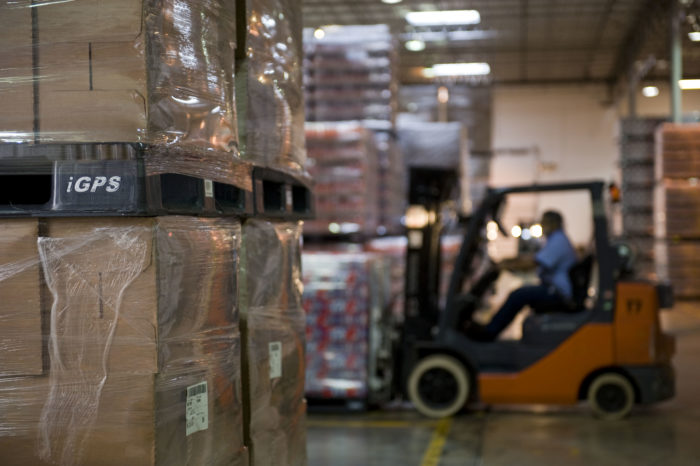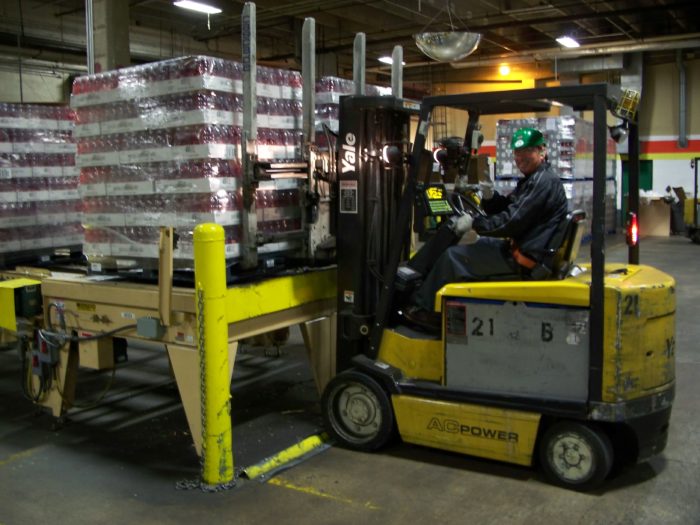Warehouse picking is the simple act of pulling product loads out of inventory. However, picking the right loads and doing so speedily without wasting time double-checking manifests can be complicated. The difficulty of the task scales up with the size of the warehouse, the density of the product it contains, and the number of different products the warehouse handles. Filling pick orders efficiently and without mistakes requires foresight, planning, and attention to detail.
Fresh food logistics is different from the logistics of storing and shipping pharmaceuticals.
Warehouse picking best practices are everyday ways of improving the speed and accuracy of your company’s warehouse pick. These practices need to be optimized and tailored to suit your warehouse’s physical footprint and the products that are shipped. Fresh food logistics, for example, is different from the logistics of storing and shipping pharmaceuticals. But no matter what products you deal with, there are some general warehouse picking best practices that can be applied across all industries to help optimize your operations.
Optimizing Slotting for Efficient Picking
Warehouse management used to depend heavily on paperwork. Inventories were tracked by writing them down and pick lists were jotted down onto paper pads, then torn off and handed to a driver. Today, modern warehouses operate using Warehouse Management Systems (WMSs), which make picking much easier by optimizing two important elements of picking: slotting and routing. Slotting is finding the best place in your warehouse inventory for a particular load. To optimize warehouse slotting for efficient picking later, take the following into consideration:
- Demand: The demand for a product affects how long it stays in your warehouse. High-demand items with short dwell times need to be kept in the most accessible slots. Variations in demand due to seasonality or availability should also be considered; products may need to be slotted in one area during the holiday season and in another area during the summer.
- Accessibility: This consideration overlaps demand. High-demand products or those with short shelf lives should be placed in areas where they can be easily accessed. Products should not interfere with each other. For example, it shouldn’t be necessary to move a product that is going out next week in order to pick products going out today.
- Safety: What is needed to store a product safely varies depending on the item. Bagged produce has different requirements than dairy, and pharmaceuticals have different requirements than paper goods. Temperature control may be a factor for many types of products, but the required temperature for safe storage will not be the same for every temperature-sensitive product. Depending on the sensitivity of the products to external conditions, other safety factors might be cleanliness or moisture, which will change the product’s optimal slotting location.
Modern warehouse management systems can take all of these different factors into account and resolve the seemingly contradictory requirements. It’s a far easier and quicker method than having a supervisor sweat bullets while going over manifests in an attempt to keep track of everything. The software can also suggest the most efficient routes for warehouse picking.
Routing for Horizontal and Vertical Picking Efficiency
 Routing involves planning the quickest way to get to stored inventory and bring it back for packing or shipping, and it is possibly the one component of warehouse picking best practices with the greatest potential for efficiency gains. Routing should inform all parts of your warehouse arrangements. There are three basic best practices to consider when arranging your warehouse with an eye to optimal routing:
Routing involves planning the quickest way to get to stored inventory and bring it back for packing or shipping, and it is possibly the one component of warehouse picking best practices with the greatest potential for efficiency gains. Routing should inform all parts of your warehouse arrangements. There are three basic best practices to consider when arranging your warehouse with an eye to optimal routing:
- Grouping Stock Keeping Units (SKUs): Ideally, products should not be mixed in storage. There should be a clear divide between products with one SKU and those with another. This helps prevent different product types from interfering with each other when they’re picked, for example, by requiring workers to move one out of the way before picking another.
- Consider Demand: Just as when you plan for optimal slotting, products with high demand should be stored in the most accessible places, and products with similar demands should be near each other. Related SKUS which are often ordered with each other might also be stored close together to make fulfillment quicker.
- Constantly Revise: The demands of the market are ever changing. A product in high demand one year may not stay that way into the next year. While you might not be able to change the entire layout of your warehouse every season to maximize efficiency, you can make smaller changes to the storage locations of individual products or categories of product. Plan to periodically review your warehouse layout to maximize efficiency as demand and inventories change.
The routes your pickers take will vary among different warehouses even if those warehouses deal with the same SKUs. Large warehouses attached to production centers may send out shipments of a single type of product. In this case, picking by zone, where order fulfillment takes place in a zone with a single or only a few SKUs, may work best.
The main limitation on the efficiency of your routing is the layout of your warehouse.
Distribution center best practices will be a bit different. A distribution center working with many different types of products may prefer a sequential pick, in which a single picker moves through zones of different SKUs to fulfill an order, or a process in which the order itself moves from zone to zone as it is filled. No matter what type of pick works best for your product type, the main limitation on the efficiency of your routing is the layout of your warehouse. Collecting the data needed to identify the most efficient warehouse layout and picking routes is the biggest challenge in warehouse picking.
Automatic Data Collection Enhances Warehouse Picking Best Practices
 There is no arguing that the easy collection of data has changed the world. However, in many ways, logistics and supply chain operations lag behind. Data collection is often done through painstaking manual processes, like scanning barcodes on pallet license plates or even recording individual product SKUs. This occurs when goods first enter the warehouse and again when they ship out. Basic manual data collection like this can undermine picking best practices by introducing opportunities for human error and by slowing throughput. A well-established data collection alternative can make gathering the data needed to improve your warehouse efficiency both accurate and fast.
There is no arguing that the easy collection of data has changed the world. However, in many ways, logistics and supply chain operations lag behind. Data collection is often done through painstaking manual processes, like scanning barcodes on pallet license plates or even recording individual product SKUs. This occurs when goods first enter the warehouse and again when they ship out. Basic manual data collection like this can undermine picking best practices by introducing opportunities for human error and by slowing throughput. A well-established data collection alternative can make gathering the data needed to improve your warehouse efficiency both accurate and fast.
While RFID chips are too expensive to be economically placed on each individual product, they can be integrated into a shipping platform.
Radio frequency identification (RFID) is a well-established technology. A simple chip with an identification number can be registered remotely and its movements through the supply chain or your warehouse tracked in real time. When this number is associated with products in a database, it enables you to track demand for the product, its dwell time, and the speed at which it was slotted and picked.
This data is invaluable to planning your warehouse layout, slotting products efficiently, and planning the fastest pick routes. In other words, it is able to enhance every aspect of warehouse picking best practices. While RFID chips are too expensive to be economically placed on each individual product, they can be integrated into a shipping platform. Adopting a shipping platform that offers RFID tracking and equipping a supply chain with RFID transceiving equipment to support it may be the most effective warehouse picking best practice. It certainly makes implementing and optimizing other best practices far easier and more efficient.
The iGPS pallet pool offers a plastic pallet equipped with GS1 standard RFID tracking. To get the plastic pallet that helps optimize your warehouse picking best practices, give our team a call at 1-800-884-0225, email a specialist at switch@igps.net, or visit our contact page.



